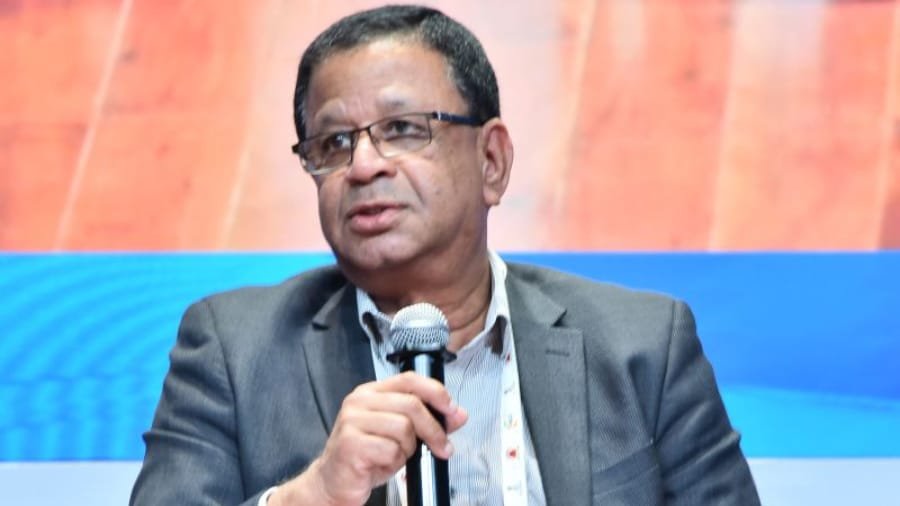
Professor Muthupandian Ashokkumar, Deputy Pro Vice-Chancellor (International) at the University of Melbourne highlighted the challenges and opportunities in transforming fundamental research into industrial applications. He was speaking at the 20th FICCI Higher Education Summit 2025 in New Delhi.
“As Australia’s oldest university — established more than 160 years ago — we are proud to be ranked 19th globally in the QS World University Rankings.”
Bridging the Gap Between Research and Industry
Drawing from his extensive experience working with global industries, Prof. Ashokkumar reflected on the long and complex journey of translating fundamental research into industrial processes.
“The first thing that comes to my mind,” he observed, “is that developing something from fundamental research to industrial application is a very slow process. It’s not going to happen in three or six months — it may take anywhere between three to five years.”
According to him, the foundation of successful industry-academia partnerships is trust. “You are going to work with a partner for the next three to five years,” he said. “If you don’t build trust, the collaboration will eventually break down.”
Prof. Ashokkumar explained that every translational research project involves primary stakeholders — the academics and immediate industry partners — as well as secondary stakeholders, such as legal and business development teams. “These secondary stakeholders often have more control over what you do and can sometimes slow down the process,” he noted. “That’s why sustaining long-term engagement is critical.”
Creating Enabling Mechanisms
Prof. Ashokkumar emphasised that while obtaining funding for basic research is relatively straightforward, transforming that research into viable industrial processes requires enabling mechanisms and structured support.
“It’s relatively easy to get funding for fundamental research,” he said. “But when you want to transform that into an industrial process, there are several intermediate stages that need support. You cannot simply take something from the lab and sell it the next day.”
He highlighted how the Australian Government, through the Australian Research Council (ARC), has designed specific pathways to support translational research. One such initiative is the Linkage Projects Scheme, which incentivises industry–university collaboration.
“If you find an industry partner willing to contribute 30% of the funding in cash, the government provides 60% support — and the industry’s contribution is tax-deductible,” he explained. “It’s an effective model that encourages partnership and shared investment.”
Beyond small-scale collaborations, the ARC also supports larger, multi-partner engagements through the Industry Transformation Research Hubs, where consortia of universities and industries jointly address major challenges relevant to entire sectors, not just single companies.
Overcoming Common Challenges
Prof. Ashokkumar candidly shared some of the pain points encountered in long-term collaborations. “In industry, people change frequently,” he said. “When you begin a project, you may engage with a particular person, but a year later that person may have moved on, and the company’s priorities may have shifted. You often have to start again from scratch.”
To mitigate such disruptions, he underlined the importance of institutional mechanisms within universities. “At the University of Melbourne, we have what we call Proof of Concept Funds,” he said. “These funds allow researchers to demonstrate the scalability of a concept through pilot-scale projects. Once an idea shows potential, industry partners are more willing to invest and take it forward.”
However, he pointed out that such mechanisms are largely available only at the domestic level, not for international collaborations.
Strengthening India–Australia Research Partnerships
While Australia and India already have a strong framework for scientific collaboration through the Australia–India Strategic Research Fund, Prof. Ashokkumar noted that this primarily supports fundamental research, not applied or translational work.
“What we need,” he proposed, “is a mechanism similar to the Industry Transformation Research Hubs, but for international collaboration. If FICCI can work with the government to create something like this for India–Australia engagement, it would open up remarkable opportunities for solving global industrial challenges together.”
He also highlighted an ongoing successful partnership — the Melbourne India Postgraduate Academy (MIPA) — which promotes staff and student mobility between institutions to strengthen research capacity. “MIPA is an excellent platform for enhancing international collaboration in basic research,” he said, “but we now need to extend such efforts to applied research and innovation.”
A Call for Structured International Mechanisms
Prof. Ashokkumar reiterated the need for enabling frameworks that foster long-term, sustainable international research partnerships.
“For effective industry–academia collaboration, especially in international contexts, we need mechanisms that can support translational research — not just fundamental science,” he said. “FICCI is in a good position to engage with governments and help create those opportunities.”
He ended with an optimistic note, envisioning a future where academic excellence and industrial innovation move hand in hand across borders. “Together, we can build a model of collaboration that not only strengthens institutions but also delivers real-world impact,” he concluded.
Leave a Reply